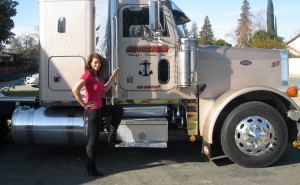 When you’re talking about family traditions and trucking, you usually think of men – but not this time – think again. In this case, we’re talking about a family tradition of women who are the ones carrying the torch and driving trucks. Sonya Wise (we’ll call her Sonya II) of Tracy, California, along with her four sisters and two brothers, all grew up in and around trucks. Her mother, Sonya Randle (Sonya I), got her CDL in 1972 and, among other things, taught her kids (including the girls) how to drive a truck. Today, Sonya II’s daughters, including young Sonya III, can’t wait to get behind the wheel of a big rig and carry on the family tradition.
When you’re talking about family traditions and trucking, you usually think of men – but not this time – think again. In this case, we’re talking about a family tradition of women who are the ones carrying the torch and driving trucks. Sonya Wise (we’ll call her Sonya II) of Tracy, California, along with her four sisters and two brothers, all grew up in and around trucks. Her mother, Sonya Randle (Sonya I), got her CDL in 1972 and, among other things, taught her kids (including the girls) how to drive a truck. Today, Sonya II’s daughters, including young Sonya III, can’t wait to get behind the wheel of a big rig and carry on the family tradition.
While attending UC Berkeley in 1950, then Sonya Mulkey (Sonya I) took a job working at the local scale house for the summer. It was there that she met William Randle, a produce hauler. Much to her parents’ dismay, she married him and became Sonya Randle. Over time, they had seven children, and she taught all of them the importance of getting a good education so they wouldn’t get “trapped” in a bad job. Sonya II was the second youngest girl in the bunch!
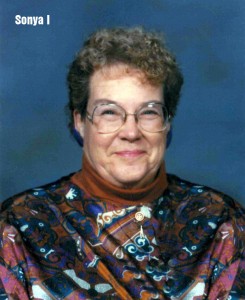 In the early days, William drove and had two drivers. He always ran special order Peterbilts, which was very unusual back then. Sonya I organized the hauls, completed the contracts, and did all of the billing and dispatching. Sonya II and her siblings were all “groomed” at how to answer the phones and dispatch. The business eventually grew to include Randle’s Trucking Service and Anchor Transportation, Inc., which collectively employed 175 flatbed subhaulers. The primary commodity was military freight, through the Department of Defense.
In the early days, William drove and had two drivers. He always ran special order Peterbilts, which was very unusual back then. Sonya I organized the hauls, completed the contracts, and did all of the billing and dispatching. Sonya II and her siblings were all “groomed” at how to answer the phones and dispatch. The business eventually grew to include Randle’s Trucking Service and Anchor Transportation, Inc., which collectively employed 175 flatbed subhaulers. The primary commodity was military freight, through the Department of Defense.
During the Vietnam era, Randle’s Trucking and Anchor Transportation were the prime carriers in California. Their loads included everything from bloodied, bullet-riddled helicopters to torpedoes, jet engines to wing tanks, squadron gear to G.I. rations and a whole lot more. At some point, William and Sonya dissolved Anchor Transportation, but Randle’s Trucking Service continued. Every summer, Sonya II and all her brothers and sisters would take turns riding along with their parents in the trucks, and the highlight for all of them was going to Disneyland in the truck.
Tragedy struck the family in 1972 when Sonya’s oldest son Timothy (who was 15 at the time) died in a freak home accident. That devastating event made Sonya Randle realize that life was too short to just wait for your dreams, so she decided to go after her dream of driving a truck, and she took the test and passed. And not only did she realize and live her dream, but she also passed it on to her daughters, as well. That year, she and William developed a successful program with the Department of Defense and then opened a Southern California terminal. That contract proved to be very lucrative for several years. Unfortunately, the haul was eventually lost and the focus of the company shifted to hauling Produce.
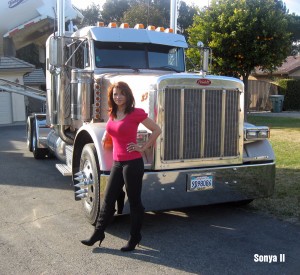 Randle’s Trucking Service continued hauling produce for a portion of the year and then they would park the trucks for five to six months. By now, William and Sonya were both getting tired – their equipment was getting old, they couldn’t get good drivers and they themselves were aging. They were running five trucks at this time, but still not really making it. Sonya II’s brother was driving for them, along with two other drivers, and William and Sonya drove the other two trucks. In an effort to offer some help, Sonya II asked her mother to teach her how to drive. After learning in a Freightliner with a Cummins and 13 gears, she got her CDL and then began to give her mom days off when she wanted (or needed) them. Not long after that, Sonya II’s sisters, Melissa and Marcia, both got their licenses, too.
Randle’s Trucking Service continued hauling produce for a portion of the year and then they would park the trucks for five to six months. By now, William and Sonya were both getting tired – their equipment was getting old, they couldn’t get good drivers and they themselves were aging. They were running five trucks at this time, but still not really making it. Sonya II’s brother was driving for them, along with two other drivers, and William and Sonya drove the other two trucks. In an effort to offer some help, Sonya II asked her mother to teach her how to drive. After learning in a Freightliner with a Cummins and 13 gears, she got her CDL and then began to give her mom days off when she wanted (or needed) them. Not long after that, Sonya II’s sisters, Melissa and Marcia, both got their licenses, too.
While majoring in Business at Cal State University, East Bay, Sonya II got her senior assignment – to reorganize a small, failing business. Well, their small, failing, family trucking business was a perfect candidate. Sonya II immediately stripped the business down to assets only and generated an aggressive business plan with a five-year return. Her parents were very skeptical about this business plan (which involved buying five new power units and several different types of trailers), but, trusting their daughter, they went along with it. In addition to adding new equipment, Sonya II also wanted to go back to hauling freight – especially the high-paying loads for the Department of Defense (DOD), like they had hauled so much of in the past.
Sonya’s business plan turned out to be a great success. In addition to once again becoming the prime carrier for the DOD, Marcia, Melissa and Sonya II would haul freight during the day and produce at night, calling it “Fruit & Freight” Trucking. Their brother had his own haul and worked with the girls periodically, but even with five sisters, he was still the biggest chauvinist (he often told the girls they would have to “compromise” themselves to get freight). But a smart man doesn’t mess with a woman when it comes to work. The shippers who were women would tell the girls to send their brother so they could give him a hard time, saying things like, “Get out there with your shorty-shorts on and get us some freight!”
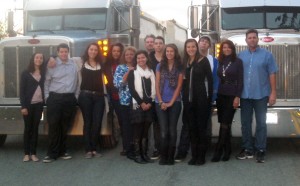 The girls all worked as a team. When the shipper needed 15 trucks, they learned how to run the 30k lift and triple stack the trailers so they could spot them at night. By morning, their five trucks had become 15! They used chains and binders, rope and straps, and breaker bars with 4-foot long cheater pipes to enhance their upper body strength. Another part of Sonya II’s business plan included targeting some of their competition. One day, one of these competitors decided to call it quits and approached Sonya with liquidation flyers – he wanted to sell his flatbeds and other equipment to Sonya and her sisters. That guy was Jim Wise of Wise Trucking. Turns out Sonya thought Jim was pretty cute, and, well, I guess you could say the competition “merged” and Sonya II became Sonya Wise.
The girls all worked as a team. When the shipper needed 15 trucks, they learned how to run the 30k lift and triple stack the trailers so they could spot them at night. By morning, their five trucks had become 15! They used chains and binders, rope and straps, and breaker bars with 4-foot long cheater pipes to enhance their upper body strength. Another part of Sonya II’s business plan included targeting some of their competition. One day, one of these competitors decided to call it quits and approached Sonya with liquidation flyers – he wanted to sell his flatbeds and other equipment to Sonya and her sisters. That guy was Jim Wise of Wise Trucking. Turns out Sonya thought Jim was pretty cute, and, well, I guess you could say the competition “merged” and Sonya II became Sonya Wise.
Back in the day (and sometimes still today) female drivers had to maneuver around challenges that men never even had to consider. A good example of this was how the girls crossed a scale. Every driver’s heart beats a little faster when the sign flips to “ALL TRUCKS STOP AT SCALE” because nobody wants to get pulled in for an inspection – especially a young female driver with lipstick and long nails. In order to avoid being the day’s entertainment for the officers, the girls had a standard routine for crossing scales which included tucking their long hair under a dirty baseball cap, removing their earrings, wiping off their lipstick, and putting on a bulky canvas jacket to hide their lady-curves. They also tried to avoid making eye-contact with the men inside the scale house. Their mission was to transform their appearance so that they looked like any other male driver crossing the scale. Sometimes it worked, and sometimes it didn’t.
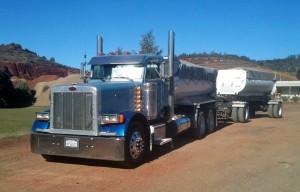 Trucking and raising a young family wasn’t easy, but Sonya II and her sisters did whatever it took to make everything work. Between the three of them, they had eight babies, which the sisters would swap, depending on who had the longest day. Changing diapers and breast feeding (or pumping) were the “norm” for these girls. The trucks were full of reading books, bottles and diapers. Needless to say, every driver that passed them had to do a double take – trucks with flatbeds, young women at the wheel and babies in car seats – what?! Those were crazy times, but they made it work.
Trucking and raising a young family wasn’t easy, but Sonya II and her sisters did whatever it took to make everything work. Between the three of them, they had eight babies, which the sisters would swap, depending on who had the longest day. Changing diapers and breast feeding (or pumping) were the “norm” for these girls. The trucks were full of reading books, bottles and diapers. Needless to say, every driver that passed them had to do a double take – trucks with flatbeds, young women at the wheel and babies in car seats – what?! Those were crazy times, but they made it work.
Eventually, all of the Randle sisters learned to drive and got their CDLs, even though some of them had other careers. Sometimes they would all roll down to Southern California together (with their brother and dad, too) in a convoy. When the shippers/receivers would see all these women, they would often ask, “What, no men in the family?” To that, the sisters would reply, “Yes, but they do hair and nails, you know, beauticians.” The girls got some pretty funny reactions over the years, but they would always eventually fess up and tell them the truth.
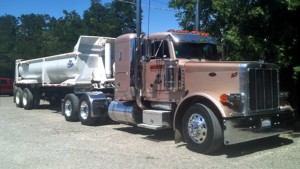 Sonya Randle was tough. One time, shortly after Desert Storm, when they were hauling armored personnel carriers and other large equipment, they were at a delivery and the soldiers there hadn’t anticipated them having double flatbeds (the off-loading ramp was set up for single trailers). The equipment was so heavy that it couldn’t be lifted off, so the officer in charge told them that they were going to reject their loads. The girls called mom back in dispatch and she promptly told them to sit tight and don’t move! Sonya I was livid because no one had communicated any unique unloading conditions or requested any specific type of trailer when the load was scheduled. The girls hung up the phone knowing that someone’s day was about to be ruined by her next call. They sat and waited until a large military chopper swooped in and landed. Their father joked, “Oh Lord, did she order Bill Clinton to come fix this?” The girls didn’t laugh, because they weren’t entirely sure it wasn’t true. The officer that came in the chopper started giving orders to his crew as to how the equipment should be unloaded, but the Randle girls could tell by what the officer was saying that he was just repeating what their mother had told him to do! Needless to say, they got the personnel carriers unloaded.
Sonya Randle was tough. One time, shortly after Desert Storm, when they were hauling armored personnel carriers and other large equipment, they were at a delivery and the soldiers there hadn’t anticipated them having double flatbeds (the off-loading ramp was set up for single trailers). The equipment was so heavy that it couldn’t be lifted off, so the officer in charge told them that they were going to reject their loads. The girls called mom back in dispatch and she promptly told them to sit tight and don’t move! Sonya I was livid because no one had communicated any unique unloading conditions or requested any specific type of trailer when the load was scheduled. The girls hung up the phone knowing that someone’s day was about to be ruined by her next call. They sat and waited until a large military chopper swooped in and landed. Their father joked, “Oh Lord, did she order Bill Clinton to come fix this?” The girls didn’t laugh, because they weren’t entirely sure it wasn’t true. The officer that came in the chopper started giving orders to his crew as to how the equipment should be unloaded, but the Randle girls could tell by what the officer was saying that he was just repeating what their mother had told him to do! Needless to say, they got the personnel carriers unloaded.
Life was going great until 1995 when their beloved mother, Sonya I, was diagnosed with Stage 4 cancer and was given only two months to live. They were all devastated! Their mother told them, “Don’t worry, I will guide you.” Sonya II was pregnant with her second child at the time, and her sick mom, thinking she would never get to see this baby, asked her to name it Sonya if it was a girl. Sonya II agreed, and a few months later gave birth to Sonya III, who turned out to be just like her mother and grandmother – head-strong and driven. Tapping into her Scandinavian heritage, Sonya I called upon her “SISU” (which means inner-strength in Finnish) and lived an additional five years (I told you she was tough).
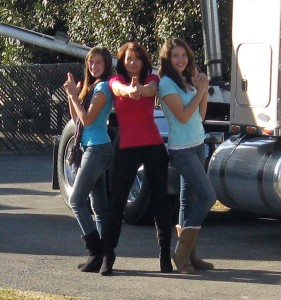 When Sonya Randle passed away in 1999, Sonya II vowed to keep her mother’s legacy alive. With their father almost absent from the decision making and power struggles between the older siblings who had no clue how to run the operation, the 54 year old business was defunct. Some of the siblings went their separate ways, but three of the sisters remained close. One sister is now an attorney, but will drive at the drop of a hat (she would rather roll than be in court). In 2000, Sonya II and her husband Jim Wise, spun off on their own and, with the support of two of the sisters, formed Anchor Transfer Service, Inc. as a tribute to their mother (Anchor was one of the companies that their mother and father had started back in the 1960s).
When Sonya Randle passed away in 1999, Sonya II vowed to keep her mother’s legacy alive. With their father almost absent from the decision making and power struggles between the older siblings who had no clue how to run the operation, the 54 year old business was defunct. Some of the siblings went their separate ways, but three of the sisters remained close. One sister is now an attorney, but will drive at the drop of a hat (she would rather roll than be in court). In 2000, Sonya II and her husband Jim Wise, spun off on their own and, with the support of two of the sisters, formed Anchor Transfer Service, Inc. as a tribute to their mother (Anchor was one of the companies that their mother and father had started back in the 1960s).
Today, Jim and Sonya’s business includes two trucks, and although the family specialty is flatbedding, they are currently running a transfer and an end dump. Jim’s truck is a blue Peterbilt 379 transfer called “Slam-Bang” which has a dropped front axle, a big Texas-style square bumper, a drop visor, straight stacks, a train horn, etc. Sonya’s truck is a champagne-colored short hood Pete she calls “Chica” that features a 36-inch flat top sleeper, a big bumper, a drop visor, cab and sleeper extensions, and plenty of extra lights and chrome. In addition to driving, Jim is the mechanical guru that keeps everything running smoothly.
Jim and Sonya have three children, two girls (ages 13 and 15) and one boy (17). Their son Matthew learned to drive at 15, and their girls are next (including Sonya III). They are still too young to drive, but their interest is undeniable. Sonya II, like her mother, told her kids to first get their education, then, if they want to come back to trucking later, they always can. With that in mind, their son is currently attending Cal State, East Bay (just like his mother did) with a major in Engineering. He helps detail the rigs and with the accounting, and is also learning how to work on the trucks. In addition to learning how to drive, their daughters, who are very tall, thin and beautiful like their mother, also model formal wear on occasion. Sonya said, “We are not the Kardashians, but we have skills, and mall-shopping isn’t one of them!”
Sonya II and her sisters have often heard people say, “You don’t look like truck drivers,” which they take as a great compliment. Hoping to make their folks proud, Sonya and her sisters believe that with perseverance, loyalty and respect for their parent’s heritage, anything is possible. To ensure that Sonya Randle’s legacy is preserved, her grand-daughter, Sonya III, can’t wait to get behind the wheel of a big rig and continue the family tradition. She wears her name like a badge of honor for her grandmother (and her mother) and reminds us all how much she passed on before she passed away. I have no doubt that the tradition that Sonya Randle started will be alive and well for many years to come!

1 Comment
I have always loved 10-4 magazine……. Kim and the editors did a great article!!!! Thank you for carrying on Sonya’s legacy…….. Can’t wait to see you guys in Louisville…..